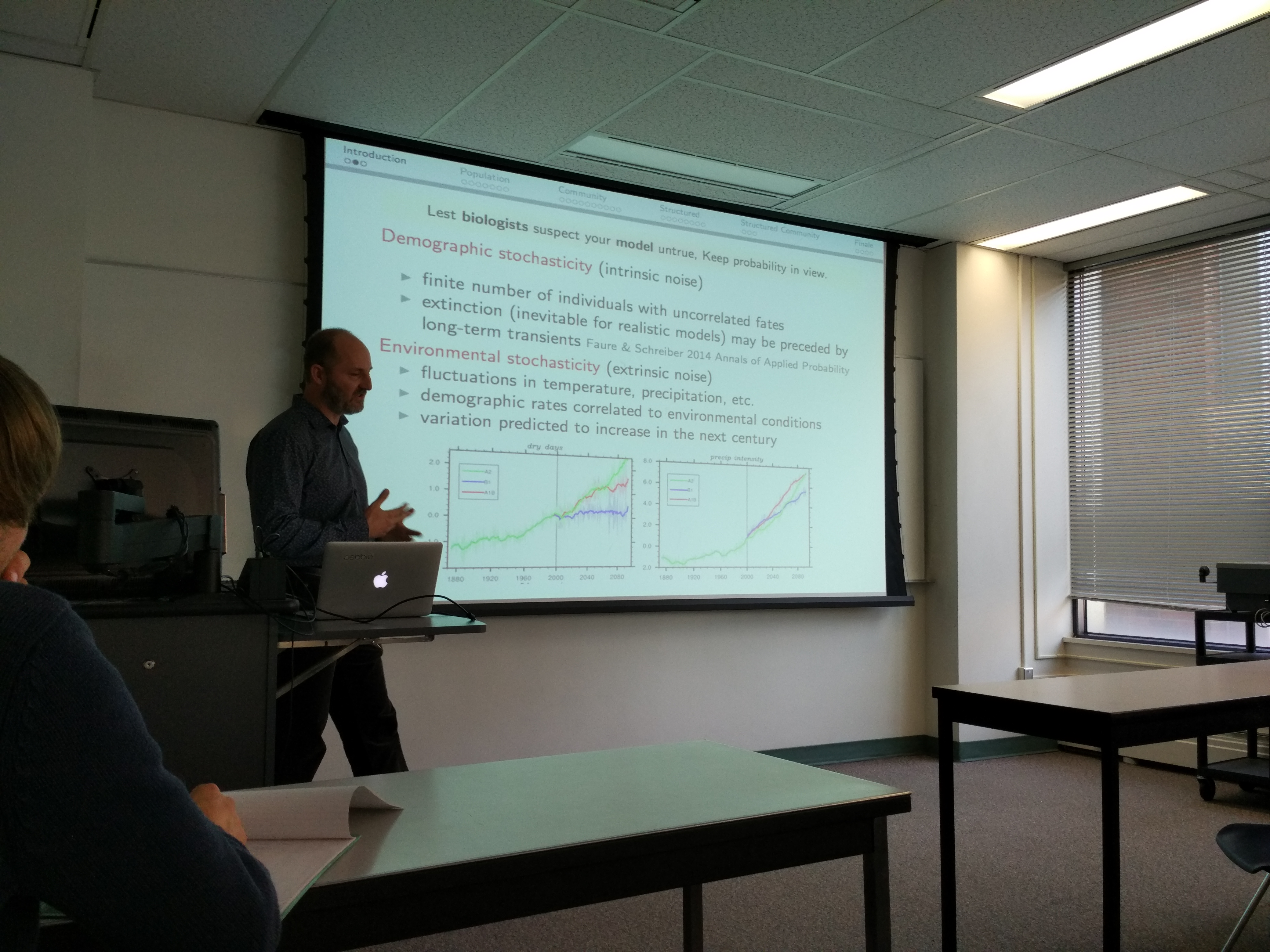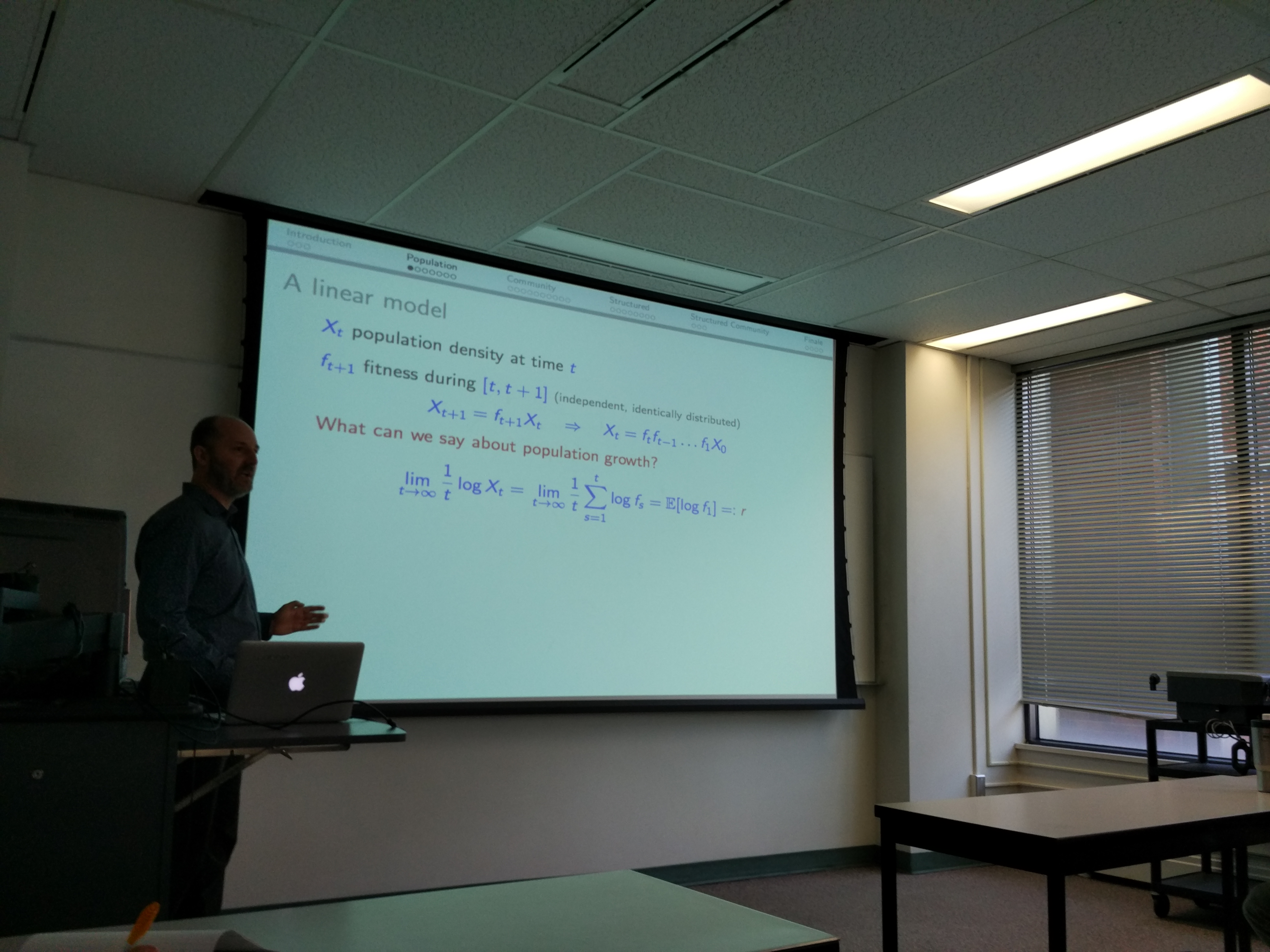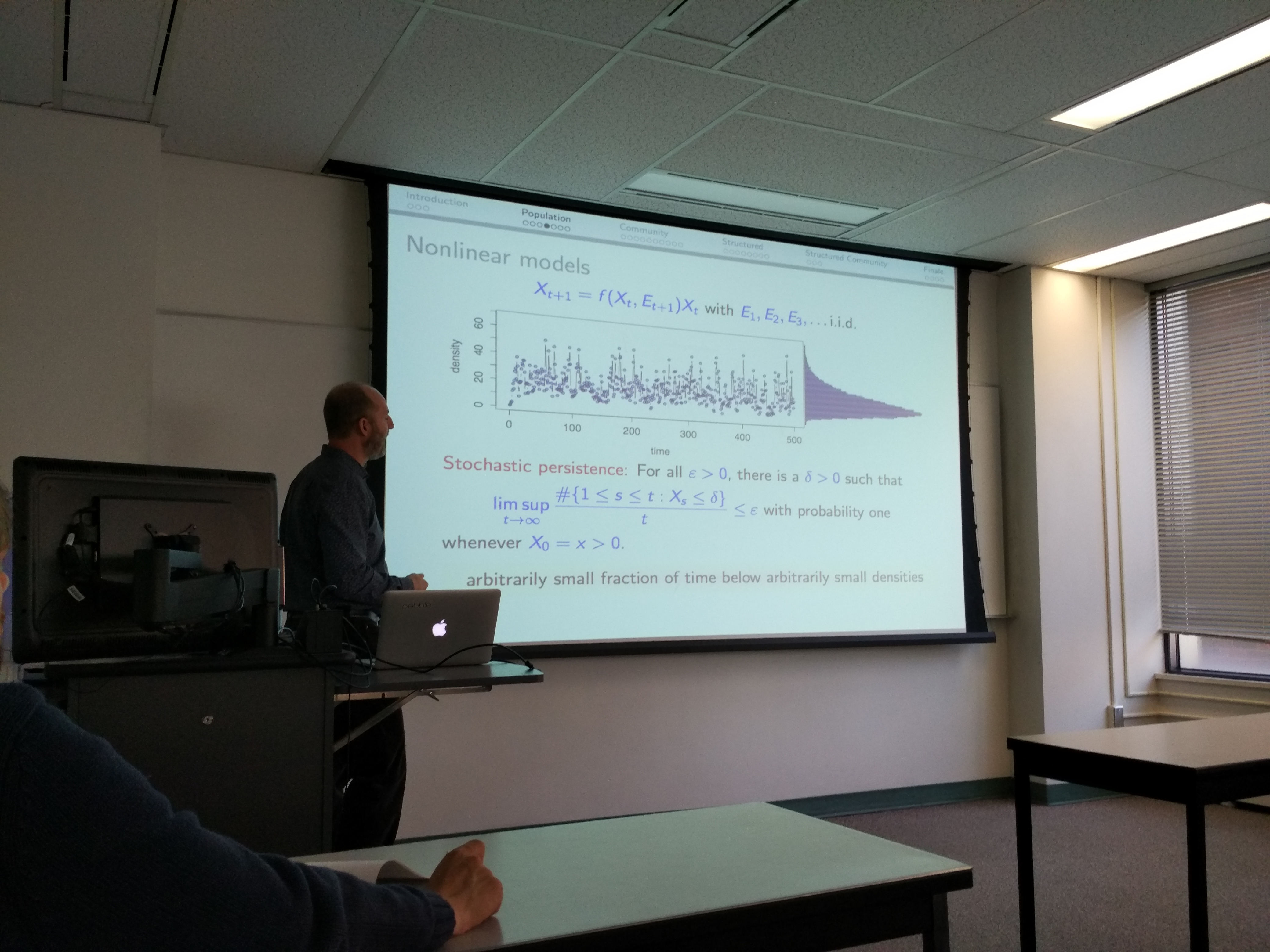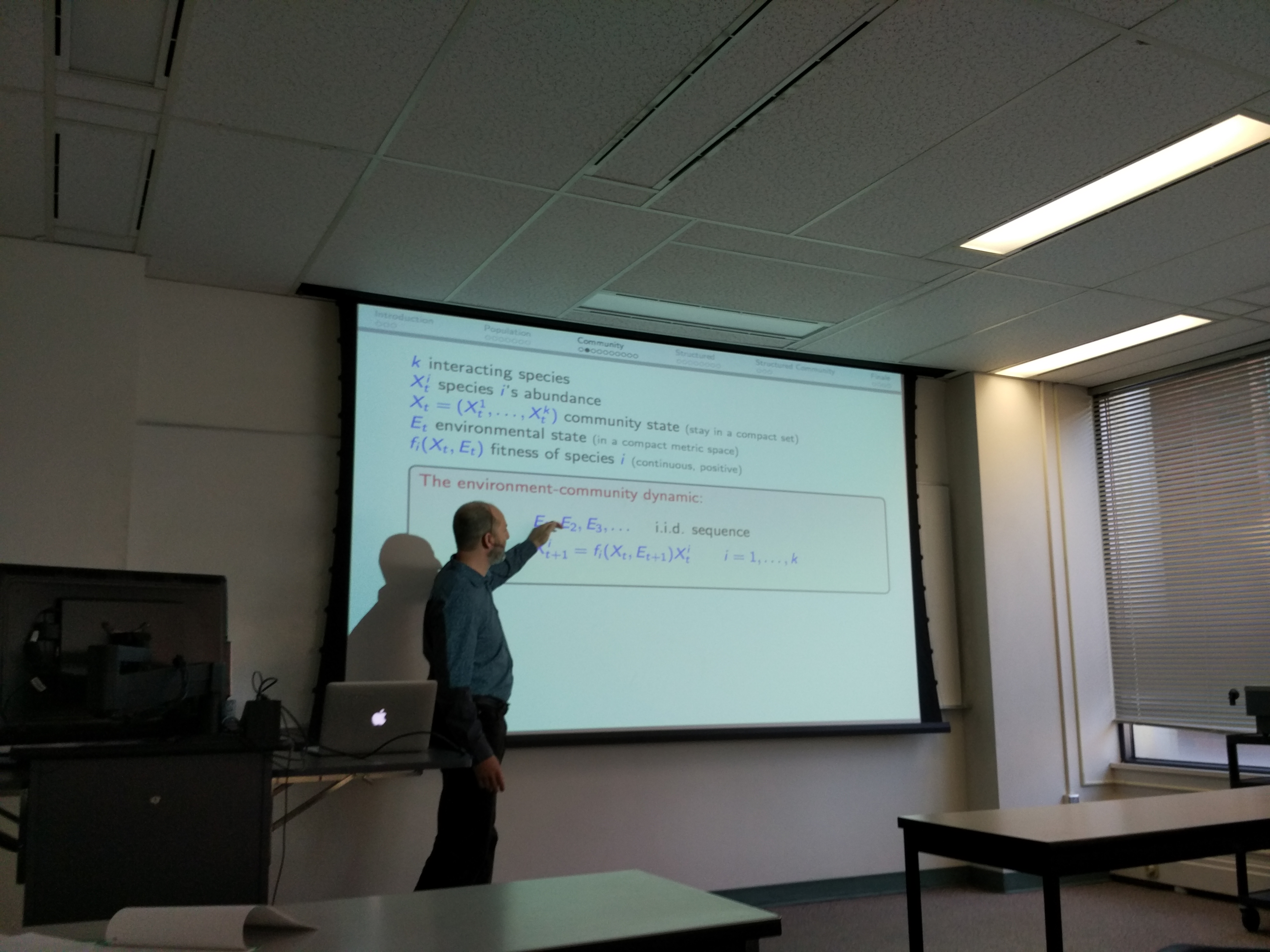Persistence of species in the face of environmental stochasticity
Posted on
Sebastian Schreiber gave a talk titled Persistence of species in the face of environmental stochasticity.
The following abstract is taken from the seminar list.
Stochastic fluctuations in temperature, precipitation and a host of other environmental factors occur at multiple spatial and temporal scales.
As the survival and reproduction of organisms, whether they be plants, animals, or viruses, depend on these environmental factors, these environmental fluctuations drive fluctuations in population abundances.
Leading a fundamental question in population biology:”Under what conditions do environmental fluctuations hinder or facilitate species persistence?” This question is particularly pressing in light of global climate models predicting increasing temporal variation in many climatic variables over the next century.
One fruitful approach: the development and analysis of stochastic models accounting for species interactions, population structure, and environmental stochasticity.
Discussion about recent progress on a mathematical theory of persistence and extinction for such models.
Illustrate by example: involving checkerspot butterflies in California, northern pike in Lake Windermere, and prairie grass in Kansas.
Types of Stochasticity

Demographic stochasticity
Intrinsic
Demographic stochasticity corresponds to random fluctuations due to populations consisting of a finite number of individuals whose fates aren’t perfectly correlated. That is, even if all individuals in a population appear to be identical, some undetectable differences between individuals (e.g. in their physiology or microenvironment) result in some individuals dying while others survive.
Environmental stochasticity
Extrinsic
While demographic stochasticity affects individuals independently, environmental stochasticity concerns correlated demographic responses (e.g. increased survival, growth or reproduction) among individuals. These correlations often stem from individuals experiencing similar fluctuations in environmental conditions (e.g. temperature, precipitation, winds) which impact their survival, growth, or reproduction
Models
Main Question
How does environmental stochasticity influence population persistence and species coexistence?
Linear Model

Nonlinear Model

Community and Structured
